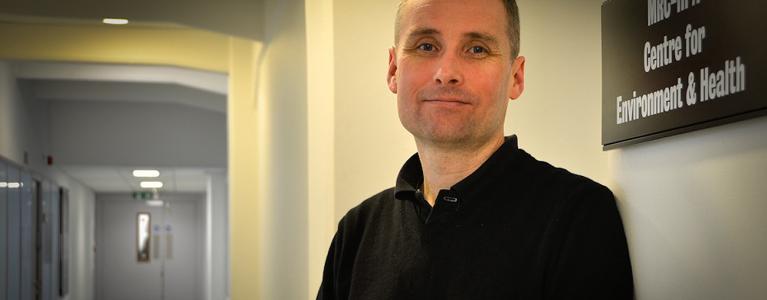
Air pollution past and present
Gary Fuller from King’s College London on why we need to be bold in tackling London’s air pollution.
It is hard to imagine smog so thick that you can’t see your own feet
Walking home from work in south London in December 1952, my dad was relieved to find his local newsagents in the murk. It meant he was nearly home and not lost after all. My dad worked for a local undertaker in south London. While the smog lingered, he knew he’d be in for a busy few weeks.
For decades, campaigners and medics had warned that smog killed people but government wasn’t convinced. The 1952 smog killed around 12,000 Londoners. With air pollution measurements, for the first time, these deaths could be directly linked to exposure.
Yet government was reluctant to interfere in what people did in their homes. A coal fire was essential to keep warm. A cheery hearth was at the heart of a home. Finally, in 1956 Parliament passed the Clean Air Act. Previous laws had controlled factories but the new act was revolutionary in controlling pollution in cities. It required better, smokeless coals and gave people money to change their fireplaces and boilers to burn cleaner fuels.
London today
Today’s pollution comes from different sources. It is less visible but still reduces the average Londoner’s life by around 17 months. This means up to 9,400 early deaths each year.
Much has changed since I began measuring air pollution as a scientist working at King’s College London 22 years ago. We’ve made huge progress in controlling pollution from industry. Catalytic converters have also removed the high levels of carbon monoxide and many other pollutants from petrol engines. Now we must deal with pollution from diesel vehicles.
Today, London meets UK legal limits for particle pollution but is short of World Heath Organisation guidelines. These tiny particles in the air we breathe make a big health impact in London.
Legal limits for nitrogen dioxide (NO2) were set in 1999, to be met in 2010 but London looks unlikely to meet these until 2025 or 2030 - at least 15 years late.
Twelve years ago, scientists warned we would miss this target. Between 2005 and 2010, levels of NO2 by our roads increased rather than went down. The recent VW scandal highlighted that the improvements registered in official exhaust tests are not replicated when vehicles are driven on our roads. It’s not just a VW issue – it applies to all diesels. We must ensure our new policies stay on track.
Cleaning our air isn’t just about reducing air pollution
We also need to make walking, cycling, and public transport the easiest way to travel. In addition to reducing air pollution this would help people to get every day exercise and less traffic would mean less CO2 emissions that are contributing to climate change. We must also think about how our goods are delivered and how food gets to the shops. We need to use the least polluting vehicles in the smartest way possible; avoiding almost empty vehicles and large numbers of vans, each delivering small packages to the same place.
Less traffic also means quieter streets and a more attractive city. In the same way the 1956 Clean Air Act was bold in dealing with pollution from smoky fires in our homes, new polices need to be bold in tackling air pollution from traffic.
For hourly updates on London’s air pollution, visit www.londonair.org.uk or download the LondonAir app.
Take part in the air quality survey
Sadiq wants to hear what Londoners think about air pollution, so contribute your ideas in the air quality survey.